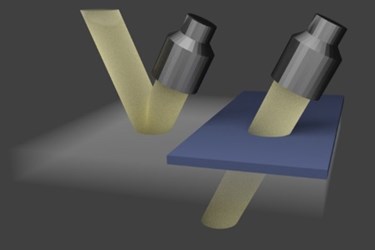New Metamaterial Enables Bone-Penetrating Ultrasound
By Chuck Seegert, Ph.D.

Researchers recently developed a new acoustic metamaterial that improves ultrasonic penetration through bone and other challenging structures. The enhanced imaging capabilities could improve ultrasound for a variety of diagnostic and therapeutic applications.
Ultrasonic imaging is a mainstay of medical diagnostics, because it allows huge amounts of information to be obtained non-invasively. Studies of the heart, liver, and most other organ systems are possible with ultrasound, though there are currently limitations to the technology. Imaging through dense bone or air pockets has historically been unsuccessful, as these layers interfere too much with the energy needed to create an image.
Overcoming limitations imposed by these “aberrating layers” may now be possible thanks to researchers at North Carolina State University (NC State), according to a recent article from NC State News. The NC State team has developed a new metamaterial design that promises to offset the effects of aberrating layers and compensate for their effects on the acoustic waves.
“We’ve designed complementary metamaterials that will make it easier for medical professionals to use ultrasound for diagnostic or therapeutic applications, such as monitoring blood flow in the brain or to treat brain tumors,” said Tarry Chen Shen, a Ph.D. student at NC State, according to the press release. “This has been difficult in the past because the skull distorts the ultrasound’s acoustic field.”
The new technology is anisotropic and is called an acoustic complementary metamaterial (CMM), according to a study published by the team in Physical Review X. The CMM model was designed and tested using a computer simulation and was composed of cells that contain membranes and side branches with open ends. Placing the CMM design adjacent to an aberrating layer leads to a reduced acoustic field distortion that virtually removes the aberrating layer from the image.
“In effect, it’s as if the aberrating layer isn’t even there,” said Dr. Yun Jing, an assistant professor of mechanical and aerospace engineering at NC State, in the press release.
When normal ultrasound encounters an aberrating layer, simulations showed that only about 28 percent of the energy passed through the layer, according to the press release. With the addition of the CMM, 88 percent of the energy made it through the aberrating layer.
The value of ultrasound in healthcare is continually highlighted by cutting edge research advances and new medical devices. Recently, a new portable and networked ultrasound system was tested for use by emergency medical personnel and first responders.
Image Credit: Yun Jing
